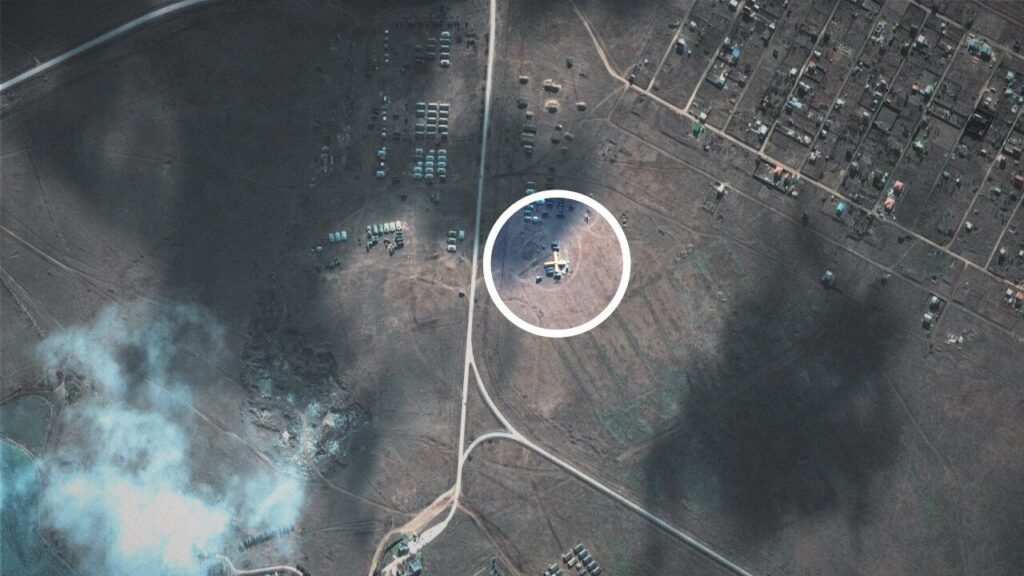As the anniversary of the Ukraine war approaches,NATO has implemented a new deployment model,one that excludes the United States. This shift marks a significant change in the alliance’s strategy and relationships,as member nations seek to adapt and strengthen their defenses in the face of ongoing threats. The implications of this move are far-reaching, signaling a new era of collaboration and cooperation within the alliance.
Challenges of NATO’s New Deployment Model Without US Participation
NATO’s new deployment model, tested without US participation, presents a unique set of challenges as the alliance prepares to mark the anniversary of the Ukraine war. The absence of US forces raises concerns about the overall effectiveness and capabilities of NATO’s military operations.
Without US participation, NATO members face the following challenges:
- Coordination: Ensuring seamless coordination among member states without the largest military power in the alliance.
- Logistics: Overcoming logistical hurdles and ensuring smooth execution of operations without the US resources and support.
Impact on NATO’s Military Strategy in Eastern Europe
NATO has recently been testing a new deployment model in Eastern Europe,signaling a shift in military strategy ahead of the anniversary of the Ukraine war. This new approach involves increased collaboration and coordination among NATO member countries in the region, with a focus on bolstering defense capabilities and readiness.
this experimental deployment model excludes the US, allowing NATO forces from European countries to work more closely together in response to potential threats.By relying on regional allies and resources, NATO aims to demonstrate its ability to effectively defend Eastern European territories and deter aggression.This strategic shift underscores the importance of cohesion and unity within the alliance, especially in the face of evolving security challenges in the region.
Lessons Learned from NATO’s Trial Run Before Ukraine War Anniversary
NATO recently conducted a trial run of a new deployment model, which notably excluded the participation of the United States. This experimental exercise comes just ahead of the anniversary of the Ukraine war,marking a significant shift in NATO’s operational strategy. By testing this new approach without US involvement, NATO aims to assess its capabilities and readiness for potential conflicts in the region.
During the trial run, NATO member countries collaborated closely to demonstrate their ability to act swiftly and effectively in a crisis situation. This initiative allowed for valuable lessons to be learned, including the importance of coordination, communication, and adaptability. The triumphant execution of this deployment model showcases NATO’s commitment to enhancing its military readiness and response capabilities in the face of evolving security challenges.
Preparing for Future Conflict Scenarios: NATO’s Way Forward
NATO has recently conducted a groundbreaking test of a new deployment model, designed to enhance its readiness and effectiveness in future conflict scenarios. The test, which notably excluded US forces, comes ahead of the anniversary of the Ukraine War and signals NATO’s commitment to adapting and evolving in the face of changing global security challenges.
This innovative deployment model emphasizes collaboration, flexibility, and rapid response, ensuring that NATO forces are prepared to effectively address a wide range of potential threats. By testing this new approach without US involvement, NATO is demonstrating its ability to operate independently and strengthen its collective defense capabilities. As NATO continues to advance its strategies and capabilities, the institution remains focused on promoting stability and security in an increasingly complex geopolitical landscape.
In Summary
As NATO continues to adapt to global security challenges, the test of a new deployment model without US forces signals a shift towards greater cooperative efforts within the alliance. As we approach the anniversary of the Ukraine war, it is crucial for NATO to remain vigilant and prepared to respond swiftly to any potential threats. By embracing innovation and collaboration, the alliance stands ready to uphold its commitment to peace and stability in the region. Stay tuned for more updates on NATO’s evolving strategies and efforts to ensure a safer and more secure future for all.


